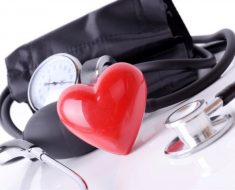
Hematopoietic stem cells (HSCs) have the capacity to both self-renew and differentiate into all mature blood cell types, making them promising treatments for a variety of diseases. However, the mechanisms involved in engraftment—when the cells start to grow and make healthy blood cells after being transplanted into a patient—are poorly understood. A recent study led by researchers at Massachusetts General Hospital (MGH) and Boston University School of Medicine has revealed the unique signature of genes expressed by HSCs capable of undergoing this process. The findings, which are published in Nature Communications, could enable scientists to expand these cells outside of the body or to convert other types of stem cells into cells that can repopulate the blood system.
In adults, HSCs are found in the bone marrow and bloodstream, but before birth, they can be found to a greater extent in the liver, where they multiply, or proliferate, into additional HSCs at a very high rate. Moreover, research in animals has shown that HSCs in the fetal liver are more capable of engraftment than HSCs from bone marrow.
To understand what allows fetal liver HSCs to have these superior proliferation and engraftment characteristics, investigators examined the gene expression patterns that are unique to these highly potent stem cells. They combined this examination with a variety of experimental methods to characterize the protein expression and functionality of those same cells.
“This in-depth analysis revealed that these stem cells express a protein on their surface called CD201 that correlates very closely with this engraftment potential and can be used to isolate functional stem cells away from other cell types,” says co–senior author Alejandro B. Balazs, Ph.D., a principal investigator at the Ragon Institute of MGH, MIT and Harvard. “This will help us improve the process of bone marrow and stem cell transplantation by allowing us to purify these cells.”
The enhanced understanding of the genes involved will also help scientists propagate HSCs with high engraftment potential in the lab and manipulate them to more efficiently fight blood cell-related diseases such as sickle cell anemia, HIV and certain types of cancer. “Altogether, this work has resulted in a detailed blueprint of the most potent blood stem cells and will lead to a better understanding of why these cells have such an extraordinary regenerative capacity. Such insights will allow us to create safer and more efficient therapies for patients suffering from blood disorders,” says lead author Kim Vanuytsel, Ph.D., a research assistant professor of medicine at Boston University School of Medicine.
Co–senior author George J. Murphy, Ph.D., an associate professor of medicine at Boston University School of Medicine and co-founder of the BU and BMC Center for Regenerative Medicine (CReM), adds that the team’s openly shared resource, which has been made available in an interactive format at https://engraftable-hsc.cells.ucsc.edu, will enable new biological insights into engraftment potential and stimulate a broad range of future studies. “This important work would not have been possible without the potent, collegial collaborations that took place between Boston area institutions. This project is also a shining example of ‘open source biology’ at work where the freely shared information and insights can be harnessed by all for future discovery,” he says.
Source: Read Full Article




